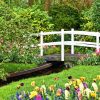
It’s true that house plants improve air quality, function as potent mood-boosters, and provide stunning aesthetics. However, the list of reasons to welcome certain plants into your home goes beyond what they can physically and mentally do for you.
According to the teachings of Feng Shui, indoor plants do a lot more for us than their science-backed benefits suggest. Some plants are luck magnets, and having them in your home grants the universe permission to send luck your way.
These plants can improve relationships, magnify prosperity, and attract luck in several aspects of life. You just have to know which plants to get, which ones to avoid, and equally important, how to position your lucky plants to reap their Feng Shui benefits.
Which House Plants are Lucky?
After a thorough search online, you’ll realize that several sources don’t understand Feng Shui plants since they bundle lucky and unlucky plants together.
According to Feng Shui, it can be harmful to your luck to get the wrong plants, which is why this guide only focuses on the seven lucky plants for your home.
You won’t have to guess which plants do what or how to take care of them because all that is detailed in this guide. Let’s dive in!
1. The Money Tree
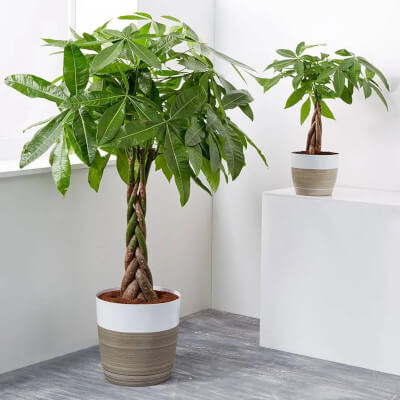
The money tree, known by its botanical name, Pachira Aquatica, is a type of bonsai or houseplant believed to carry loads of financial luck.
Characterized by a braided trunk and lush green leaves, the money tree is said to attract good luck and positive energy into your financial situation. It’s also known to reduce stress and anxiety, perhaps with the assurance of financial stability.
The money tree thrives best in quick-draining soil, the most ideal of which is a peat moss mixture. It requires bright, indirect daylight as the plant usually thrives under the canopies of other trees. Direct sunlight may be too much for its lush leaves.
2. Potbelly Fig
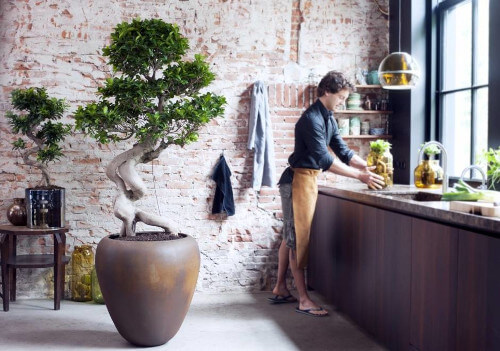
The potbelly fig is another bonsai-type plant that sometimes goes by Taiwan ficus, the banyan fig, or the Indian laurel fig. Scientifically, it is known as the Ficus ginseng plant.
In Feng Shui, the potbelly fig symbolizes good luck and harmony. While its green, shiny leaves make it a beautiful housewarming gift, it is believed that whoever receives this plant gets a double helping of good fortune.
The potbelly fig requires bright but indirect sunlight to thrive. It should only be watered occasionally, especially since it needs a humid environment to grow. Ficus ginseng grows in soil that contains forty percent organic matter, especially if it holds water.
3. Rubber Plant

The Ficus elastic is better known as a source of natural rubber. Also named the Indian rubber plant and the rubber fig, the rounded leaves of this plant have symbolic importance in Feng Shui.
They’re said to symbolize wealth, happiness, and abundance and attract good fortune to the household. The rubber plant has other benefits too. It draws out toxins from the air and dispels negative energy.
When growing, the rubber plant requires lots of indirect sunlight and a well-draining soil consisting of at least one part potting soil or peat. Watering should be conducted weekly or bi-weekly.
Related Reading: Feng Shui Your Garden: Design Your Dream Garden with Feng Shui Principles – Opens in new tab
4. Jade Plant
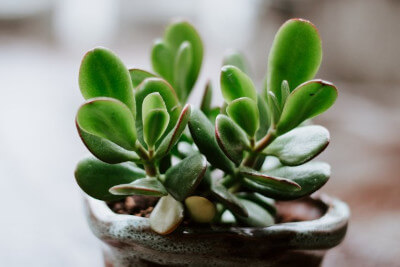
One of the most essential Feng Shui houseplants is certainly the Jade Plant. It goes by many names, including the money plant, the silver dollar plant, and the friendship plant. Scientifically, the jade plant goes by Crassula ovata.
This common houseplant features small, succulent, coin-shaped leaves that store most of the plant’s water. As such, this is not a plant that you want to water every day. A helping of bright light keeps the succulent leaves thriving, especially if it’s indirect.
The jade plant requires slightly acidic soil (pH of 6.0) to thrive as a succulent plant. Alkaline soil can quickly famish this lucky Feng Shui plant.
5. Snake Plant
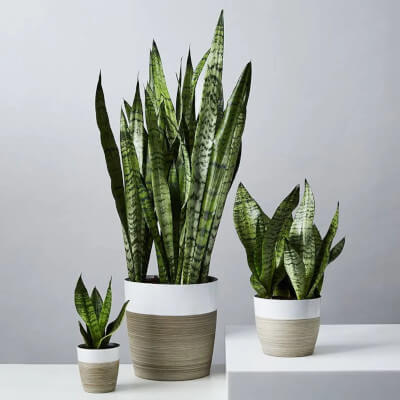
The snake plant also goes by the name ‘mother-in-law’s’ tongue, but it is officially recognized by its botanical name, Dracaena trifasciata. It is famous for its yellow-striped leaves and sometimes bears small, pale flowers with a slight scent.
One of the reasons it’s so popular as a houseplant is that it’s easy to take care of. Snake plants thrive in bright and dim environments and only require watering every three to four weeks. In Feng Shui, the snake plant is known for its ability to promote good health and draw positive energy to any space. At night, snake plants also absorb toxins and release oxygen, allowing you to breathe easier in your sleep.
This type of plant grows best in a free-draining soil mix. It requires good drainage because it is prone to rot. It’s essential to use a terracotta pot and a soilless potting mixture to facilitate optimal drainage for this plant.
🍀 Our “Feng Shui Master” app is your trusted companion, offering a useful guide to implementing Feng Shui principles. Try it now!
6. Eucalyptus
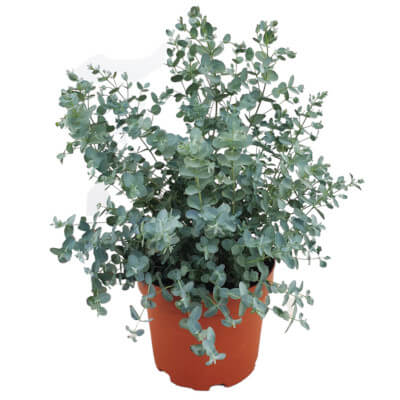
Eucalyptus is the Feng Shui symbol for energy rejuvenation. Not only does it carry therapeutic properties, but its smell is often associated with cleansing and fresh starts.
The minty fragrance of a eucalyptus plant can ease fatigue and refresh a tired mind. It is a powerful positive energy that draws mental peace and health and cleanses the space bad vibes.
Eucalyptus grows best in well-draining, neutral soils, but it will thrive just as well in mildly acidic and alkaline soils with a pH range of 4.5 – 7.5. Eucalyptus plants require a lot of sunlight (roughly 8 – 10 hours’ worth), so if grown indoors, they should be near a south-facing window that gets plenty of sunlight.
7. Lucky Bamboo
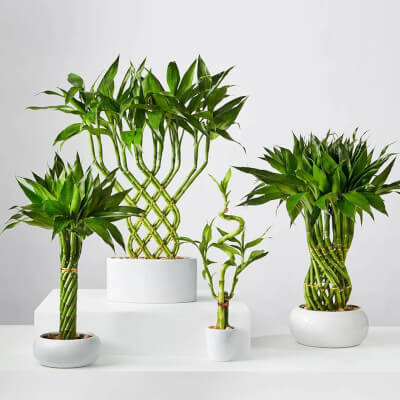
The lucky bamboo is indigenous to the tropical rainforests in Africa and Southeast Asia. Scientifically, it goes by Dracaena sanderiana and emerges from the plant family of Asparagaceae.
Feng Shui postulates that the lucky bamboo symbolizes prosperity and fortune, but it all depends on the number of stalks it carries. For instance, an arrangement with a single stalk may symbolize unity, whereas two stalks may stand for love. Three stalks often mean wealth, happiness, and longevity, and for good health, an arrangement would need to have at least seven stalks.
Like other succulents, the lucky bamboo fairs well in rich, well-drained soil. It can also grow in water. The most important consideration is to give it plenty of bright, indirect light and warmth.
Take a look at some Feng Shui product ideas – Opens in new tab
Where to Put Feng Shui Plants in your Home
East & Southeast
These are both wood sectors, and Feng Shui plants are known for their ability to enhance wood energy. Placing the plant here can drum up more energy in that area.
Energizing the East leads to more creativity and motivation, which can be helpful in your career. Energizing the Southeast strengthens social relationships and may also increase money luck.
South
The domain of the fire element is an important area to energize. Plants symbolize wood, and fire thrives on wood. Therefore, placing plants on the Southside of your home will increase courage, assertiveness, and decision-making abilities.
Entry Hall and Living Room
Your largest indoor plants should go in the entryway and living room. Placing Feng Shui plants in these parts can improve the entire family’s luck. However, keep large plants away from the Northwest, Southwest, and Northeast, even if it means skipping these crucial locations.
Dining Room
Plants in the dining room boost the money luck of the household. Feng Shui experts say that placing fruit-bearing plants in this area may signify the reaping of rewards.
Home Office
Science and Feng Shui agree that house plants may increase concentration and make learning easier. The best plants for this area of the house are straight lucky bamboos, which may bring great benefits in your study area (Wen Chang area).
Related reading: Beyond Miracles: Understanding the Real Impact of Feng Shui on Luck – Opens in new tab
What Plants are Bad Luck in the House?
Cacti
Avoid placing cacti in the house at all costs. Cacti and other pointy, sharp, or needled plants have a significant amount of negative energy. Sharp objects produce negative energy that may threaten your sense of security. They may make you anxious, guarded, and perpetually uncomfortable.
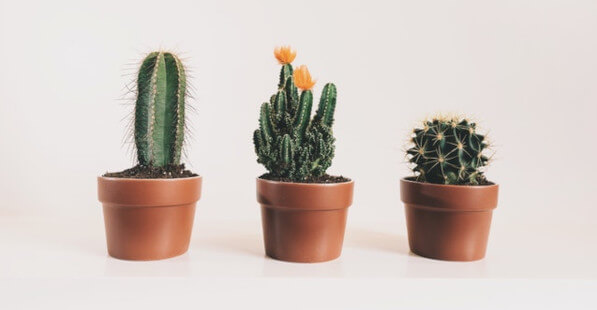
Feng Shui Tips for Plants
1. Don’t put too many plants in one area as over-energizing sectors may have unintended consequences.
2. The size of the plants should match the size of the room. Don’t place overly-large plants in small spaces.
3. Want to counter the Qi-suppressing energy of beams? Place large, tree-like plants underneath them. It is said that upward growth can dispel this negative energy and bring a more positive quality to the space.
4. Avoid putting any plants in the center of the house as this area belongs to the earth element.
5. Plants are not suitable for the bedroom, something that both scientific and Feng Shui experts agree on. Plants that release carbon dioxide at night can be harmful to you in your sleep. What’s more, plants in the bedroom may harm the health and luck of the breadwinner.
6. Don’t put plants in the kitchen. Cramming fire and wood energy in the same space may result in undesirable consequences.
7. Larger plants bring more energy than smaller plants.
Want to learn more about Feng Shui? Check out our suggestions: Feng Shui Bookshelf – Opens in new tab
Stay in Touch
 Join our newsletter by using the forms on this website or click here!
Join our newsletter by using the forms on this website or click here! Follow us on Google News
Follow us on Google News Follow us on Facebook
Follow us on Facebook
Feature Image from Depositphotos



